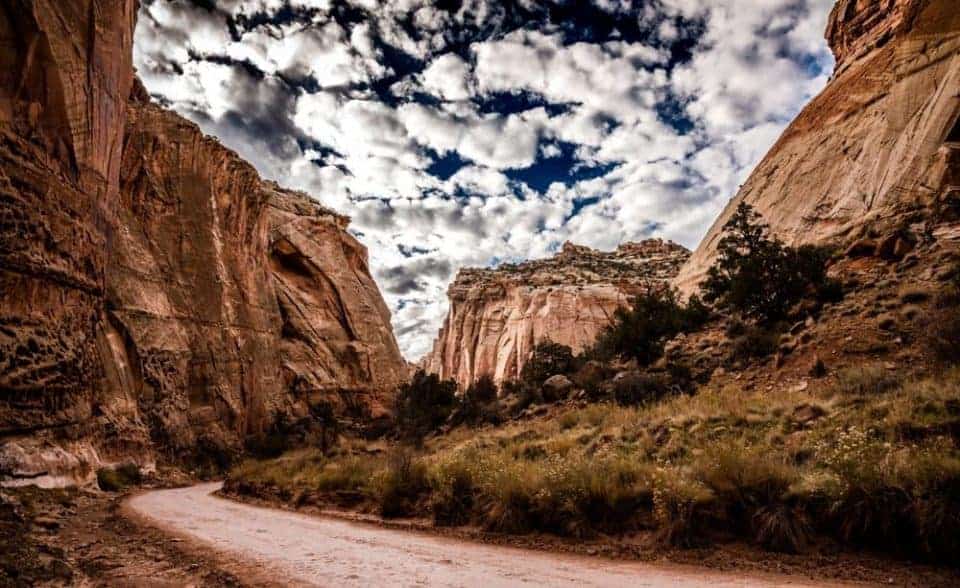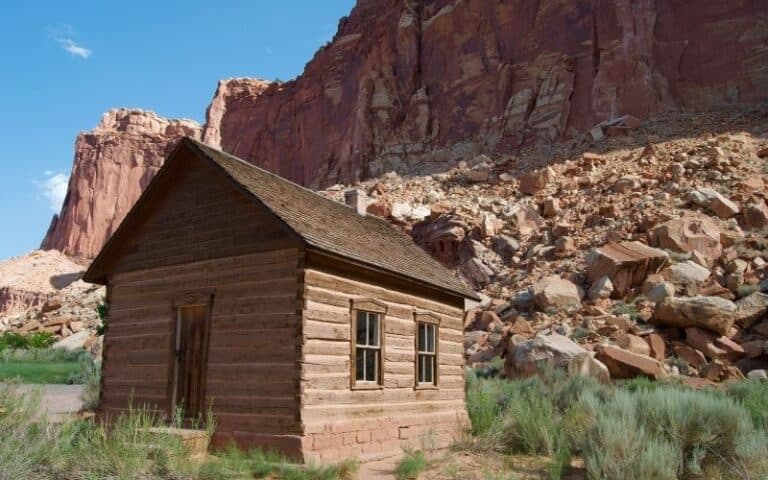Best Time to Visit Capitol Reef National Park
Determining the best time to visit Capitol Reef National Park depends on what you want to see and do.
Use our Capitol Reef National Park guide and the tips below to help you decide the best time to visit this amazing national park.

We share things to do, what to pack, expected weather and services available at Capitol Reef National Park during each season and all 12 months of the year.
This site contains affiliate links which means WE may receive commissions for purchases made through these links. We only provide links to products we actually use and/or wholeheartedly recommend! As an Amazon Associate, we earn from qualifying purchases. Read the full Disclosure Policy.
A Photo Tour of Capitol Reef National Park
Take a visual tour through Capitol Reef National Park to see the stunning landscape and wildlife you’ll find in the park!
Best Time to Visit Capitol Reef National Park
There really isn’t a bad time to explore Capitol Reef. But there are some seasons and months of the year that make visiting more enjoyable than others to be outdoors exploring the park.
Visiting Capitol Reef by Season
- Capitol Reef National Park in the Spring
- Capitol Reef National Park in the Fall
- Capitol Reef National Park in the Summer
- Capitol Reef National Park in the Winter
Visiting Capitol Reef by Month
- Capitol Reef in January
- Capitol Reef in February
- Capitol Reef in March
- Capitol Reef in April
- Capitol Reef in May
- Capitol Reef in June
- Capitol Reef in July
- Capitol Reef in August
- Capitol Reef in September
- Capitol Reef in October
- Capitol Reef in November
- Capitol Reef in December
Capitol Reef National Park in the Spring
Springtime is the most popular time for tourists to flock to Utah National Parks. The time between April to May is the busiest due to spring break in Utah and the mild temperatures.
If you want a more peaceful trip, then visiting Capitol Reef National Park in the spring is not for you.

Spring Weather at Capitol Reef
Spring weather in Capitol Reef means warmer days with cool nighttime temperatures.
Be prepared for an occasional rainstorm, and maybe even snow! We recommend layers: fleece jacket, hat and gloves, especially for the morning and evening.
Spring Temperatures:
- March highs 58 / lows 34
- April highs 65 / lows 39
- May highs 74 / lows 48
Capitol Reef National Park in the Summer
Utah’s harsh and scorching summer weather means temperatures can rise over 100 degrees. If you want to visit Capitol Reef National Park in the summer, here are a few tips.
Enter the park EARLY to enjoy the cooler morning air. Then during the heat of the day, go back to your hotel to swim or simply relax in the air conditioned room. Head back to the park late afternoon before sunset when the air begins to cool. And we always recommend you take an evening to look up and enjoy the night sky full of stars!!
You need to be aware of the summer monsoon season, usually from July to September. The summer rain storms can create dangerous flash floods at Capitol Reef. Always check the weather forecast before hiking in canyons during monsoon season. Flash flood watches and warnings for Capitol Reef and surrounding national parks are provided by the National Weather Service. Flash floods can be unpredictable and your safety is your responsibility.

Summer Weather at Capitol Reef
Summer weather in Capitol Reef means hot days with intense sun! Remember to beat the heat with water and electrolytes (we love these Propel powder packets), rest and shade when exploring the outdoors.
We recommend sunscreen, sunhat and UV protective clothing for outdoor activities in the summer!
Summer Temperatures:
- June highs 87 / lows 58
- July highs 91 / lows 65
- August highs 88 / lows 63
Capitol Reef National Park in the Fall
Utah National Parks in the fall are spectacular! The temperatures aren’t as hot as summer and you can enjoy some fall color on the leaves!
Because the weather is good for outdoor activities at the parks, expect crowds at Capitol Reef National Park in the fall. Starting your day off early before the parks get crowded is always our number one tip!

Fall Weather at Capitol Reef
The temperatures are starting to cool off in the fall months which makes is perfect for outdoor activities!
We recommend a fleece jacket (always a good staple to have), good hiking shoes and drink plenty of water!
Fall Temperatures:
- September highs 80 / lows 55
- October highs 66 / lows 43
- November highs 51 / lows 31
Capitol Reef National Park in the Winter
Visiting Capitol Reef National Park in the winter is our favorite time to go! It’s the off season so the prices for lodging are cheap compared to the spring, summer and fall.
We’ve found December to be the perfect time to go before the temperatures get really cold and the weather is bad with rain and snow.
Yes, winter may mean limited services and ranger programs, but if you want to enjoy hiking and taking pictures without the crowds then this is a great time to go!

Winter Weather at Capitol Reef
Be prepared with winter clothing: waterproof layers and shoes.
Before heading out to explore the park, check with the visitor center for updated conditions. During the winter hiking trails may close, or may require traction devices due to ice.
- December highs 40 / lows 21
- January highs 41 / lows 20
- February highs 47 / lows 26
Capitol Reef National Park Itineraries
Check out these done-for-you itineraries for Capitol Reef based on the time you have to spend exploring the park!
- Capitol Reef National Park in one day
- Two days in Capitol Reef National Park
- Three days in Capitol Reef National Park
Grab our travel bundle with printable 1, 2 and 3-day itineraries to easily plan your vacation! Simply click the graphic below to get the free itinerary pack! Click on the links below to see detailed itineraries based on the time you have to spend at the park.









